St Barts restaurant is in the old Smithfield Market, near St Bartholomew’s Church. This is the oldest surviving church in London, dating back to 1123 when it was a priory. It is next to St Bartholemew's Hospital, founded at the same time as the priory. Unsurprisingly, Barts is the oldest hospital in London, and has trained generations of physicians, including my wife. The restaurant opened in October 2022 with executive chef Johnnie Crowe, who formerly worked at NEST in Hackney and has had stints at The Harwood Arms and Anglo. The format is a tasting menu, £70 at lunch and £140 for a longer version at dinner. The dining room seats thirty diners at large, generously spaced tables. There is a welcome lounge and open kitchen, and there is a fine view out over a historic courtyard.
The wine list majors on low-intervention wines. There was a wine pairing available at £60 for lunch and £100 at dinner. The restaurant was awarded a Michelin star in the 2023 guide (in March). The wine list had 226 labels and ranged in price from £45 to £600, with a median price of £108 and an average markup to retail price of 3.1 times, which these days in London seems almost reasonable. Sample references were Alvaro Castro Branco Dao 2022 at £50 for a bottle that you can find in the high street for £17, Domaine Graeme & Julie Bott First Flight Syrah 2020 at £80 compared to its retail price of £17, and Domaine Léon Barral 'Le Blanc' Terret Gris & Blanc blend 2020 at £95 for a wine that will set you back £41 in the high street. For those with the means there was Vincent Girardin Corton-Charlemagne Grand Cru 2020 at £550 compared to its retail price of £218, and Chablis Vincent Dauvissat 1er Cru Sechet 2021 at £400 for a wine whose current market value is £156.
The meal began with a pair of cured meats from Mangalitsa pigs, the Hungarian breed noted for its excellent flavour. There was pancetta and also coppa (neck fillet), and these had plenty of flavour. They were served with some rather dense soda bread that had been made from scratch in the kitchen.
The first course was Jersey beef carpaccio. The meat used was a cut of beef called a Denver cut, essentially chuck. This was aged for a hundred days and served with a dressing of horseradish and perilla (shiso). The spicy kick of the horseradish nicely enlivened the beef, which had plenty of flavour and had been tenderised through the ageing process (15/20).
Button mushrooms came in a cep flavoured savoury custard. Made with ceps, king oyster mushrooms and shiitake mushrooms caramelised in roasted yeast butter. Mixed in with sourdough croutons and a foam of pickled mushrooms. This was an enjoyable dish, the pickling process bringing enough sharpness to cut through the richness of the custard. It would have been interesting to see what this might have tasted like with higher-quality mushrooms (15/20). This was followed by a squash “risotto”, essentially a pumpkin seed praline with squash cooked with pumpkin juice and foam of pickled squash juice. This was a pretty dish but for me the squash was too sweet and needed another element for balance (14/20).
The best dish of the meal was a large scallop (supplied by the excellent Keltic Seafare) cooked on a barbecue on one side and then rested along with fennel flowers, topped with fennel fronds and pickled peppers from a farm near Brighton. This came with a bouillabaisse style sauce made using mullet bones. The scallop’s natural sweetness was contrasted by the gentle spicy heat of the peppers, and the sauce had good depth of flavour (16/20).
The main course involved a breed of duck called “Pekin duck” from Yorkshire. The meat was aged for two weeks and barbecued, served with pickled lingonberries, duck fat and berry compote dressing with radicchio. The duck had good flavour and was nicely cooked, though for me it seemed just a little fatty in nature. The meat came with mash and also a little loaf of milk bread (14/20).
A cheese course was accompanied by oat cakes, sourdough crackers and fruit bread. The first cheese was Yarlington from King Stone Dairy in Cheltenham, a soft cheese that was washed in wild fermented cider. Baron Bigod is a British soft cheese from Suffolk in the style of Brie. Beauvale is a blue cheese from Nottinghamshire, and Lincolnshire poacher is a hard cheese. These came with a medlar and onion chutney and quince fruit, the supplier of the cheeses being Buchanans in west London. These were all in good condition and fitted the restaurant philosophy of being entirely British.
Dessert was black apple (a particular breed of cider apple) and grains including puffed wheat praline, flat barley cake, apple compote and black apple tuile with sourdough ice cream. This was pleasant enough, but for me the texture was a little too sticky and there was a touch of bitterness from the grains that would have benefitted from more apple compote to balance (14/20).
Petit fours were a ganache made from koji with barley that had been kept in a blackening cabinet for two months, poured into a pastry base. This had a tangy flavour vaguely reminiscent of chocolate or coffee flavour. These were interesting but to be honest I’d much rather have some chocolates. The coffee supplier is in transition at present.
Service was excellent, and the bill came to £168 per person. If you came for lunch and had short menu with the wine pairing then a typical cost per person might be around £155, though at dinner this would be a lot higher, perhaps around £270. St Barts has an attractive dining room and staff that seemed genuinely engaged with the customers. The cooking is capable though the final bill may seem quite high, at least at dinner, and as with any tasting menu there are inevitably some dishes that will appeal more than others. However, the scallop dish showed that there is some real ability in the kitchen.

















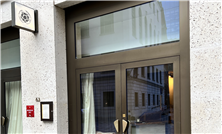


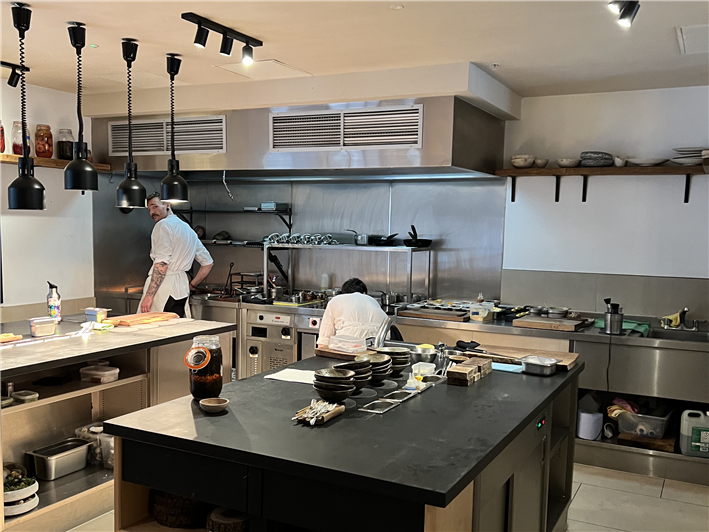


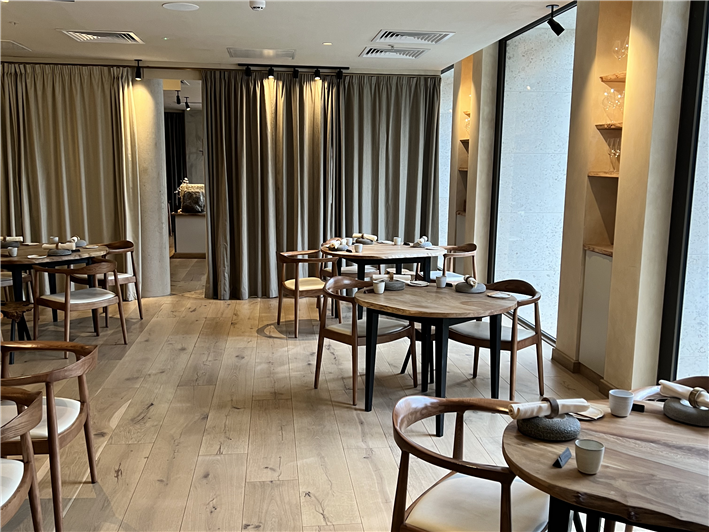
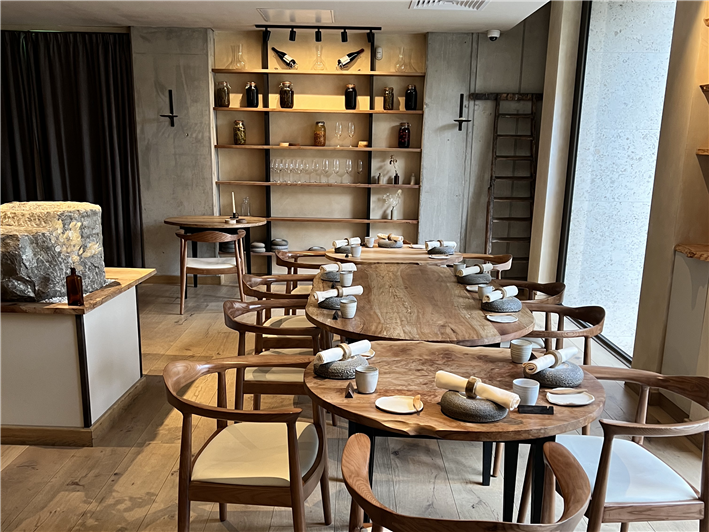

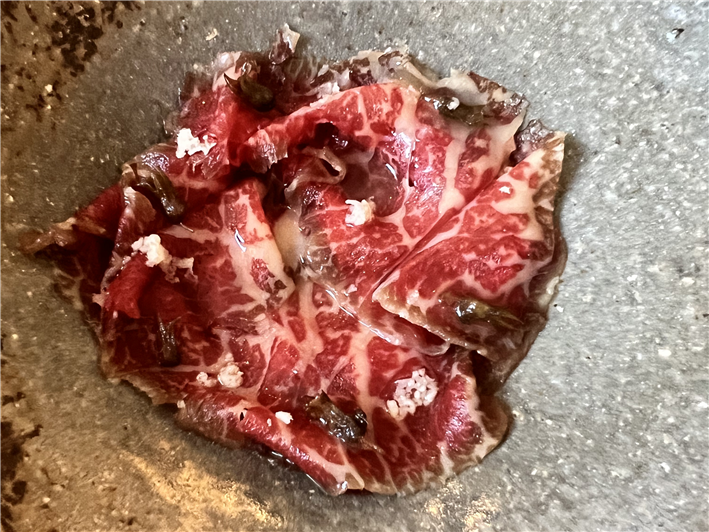
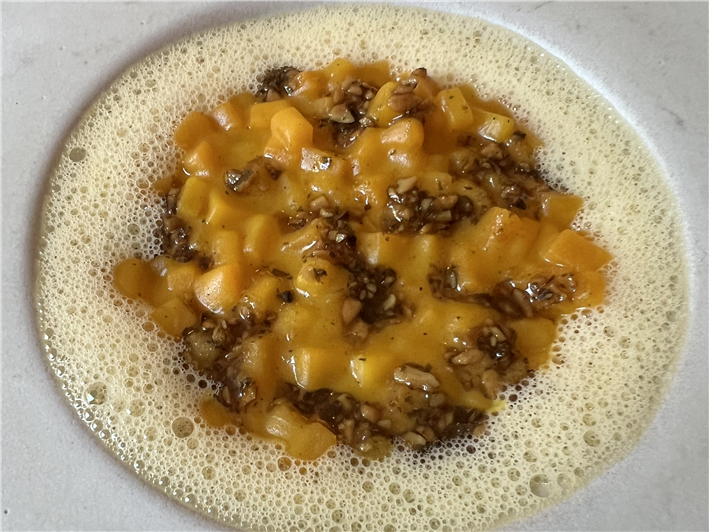
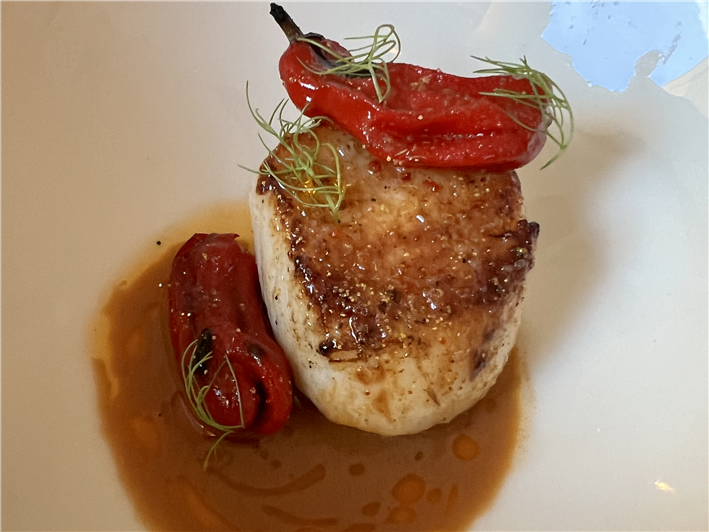
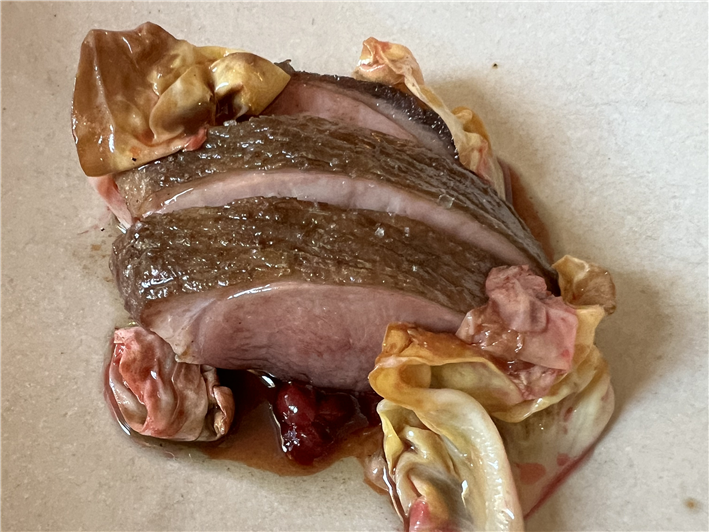
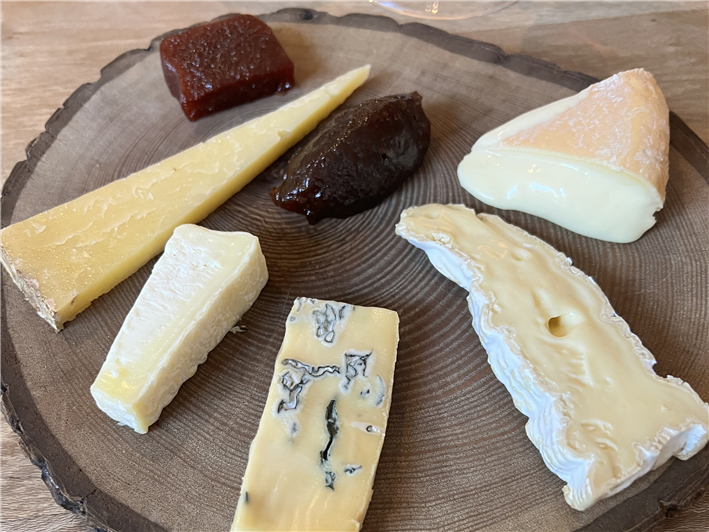
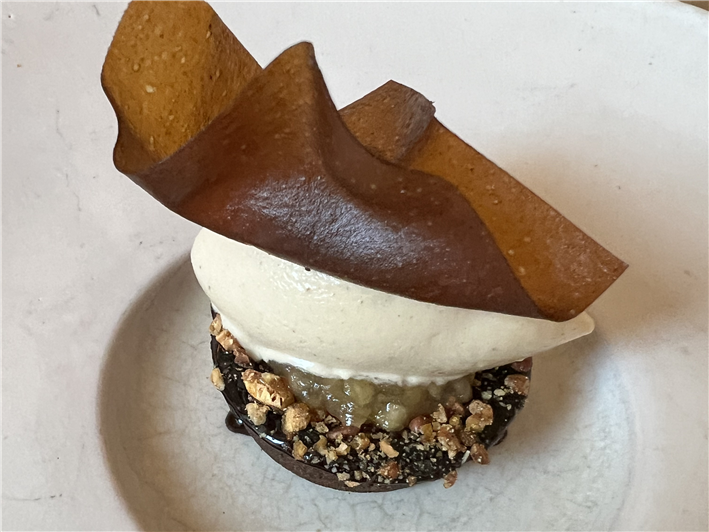
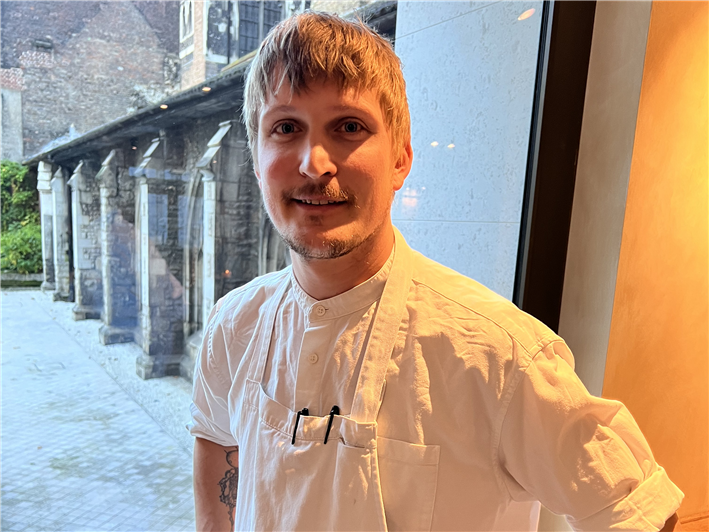

Add a comment
Thank you for submitting your comment, this will be checked and added to the website very soon.
User comments